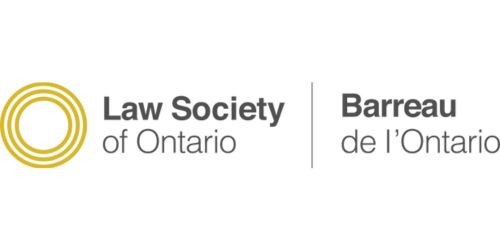Expertise in Amputation Injury Law
Expertise You Can Trust, Results You Deserve



Amputation Injury Expertise
If you or a loved one has suffered an amputation injury in Ontario due to the negligence of another party, understanding your legal rights is crucial. At Oatley Vigmond, our experienced injury lawyers provide dedicated legal support for amputation cases and will advocate on your behalf, navigating the intricacies of your claim to maximize your compensation. We recognize the profound physical, emotional, and financial impact an amputation can have on your life and are committed to advocating for your best interests. We provide a free consultation to advocate for amputation victims and represent their interests in seeking justice.
An amputation injury involves the loss of a limb or extremity, such as a leg, arm, foot, hand, finger or toe. Traumatic amputation is the removal or loss of a limb or extremity, and accounts for approximately 45% of all amputations. Amputation becomes a medical decision when a limb injury poses a significant risk to the patient’s overall health or survival, often due to infection, extensive tissue damage, or vascular problems.
Common examples of traumatic amputations include:
- Below-knee amputation (removal of the lower leg, foot, and toes)
- Above-knee amputation (removal of part of the thigh, knee, shin, foot, and toes)
- Toe amputation
- Foot amputation (including toe, partial foot, and ankle amputations)
- Finger amputation (including fingertip, partial, and full finger amputations)
- Hand amputation (including partial hand and wrist disarticulation)
- Arm amputation (including forearm, elbow disarticulation, above-elbow, shoulder disarticulation, and forequarter amputations)
- Hip disarticulation and transpelvic amputation (hemipelvectomy)
Beyond the obvious physical limitations, amputation injuries can have significant and long-lasting effects on an individual’s overall well-being:
- Physical Impairment: Loss of mobility, dexterity, and independence in performing daily activities. Amputees may have trouble performing routine tasks day-to-day.
- Post-operative Symptoms: Amputees often deal with painful post-operative symptoms, such as phantom limb syndrome (cramping pain associated with the missing limb) and heterotopic ossification (bone tissue grows in the soft tissues surrounding the amputation). Stump pain (residual limb pain) can also occur.
- Emotional Distress and Psychological Injuries: The loss of a limb can be emotionally devastating and psychologically challenging. The trauma of the event can contribute to mental health difficulties such as depression and anxiety, as well as Post-Traumatic
- Stress Disorder (PTSD): Individuals may experience grief and require psychological counseling.
- Social and Occupational Impact: Amputation can severely restrict an individual’s ability to work and participate in their previous activities, resulting in a significant reduction in income, both historically and prospectively.
- Need for Assistive Devices and Rehabilitation: Recovery often requires intensive therapy, prosthetics, mobility aids, and home assistance devices. The costs of prosthetics can range significantly. A plan of substantial physical therapy sessions is often a necessary component of recovery.
After an amputation, individuals may experience a condition called “phantom pain” where sensations of pain appear to come from the limb that is no longer there. This happens because the brain and nervous system still interprets impulses from nerves that formerly supplied the severed area. Stress, changes in the weather, or touch can all cause pain, which can show up as searing, stabbing, throbbing, or cramping feelings. Those who experience phantom pain frequently encounter obstacles. It might be challenging to concentrate or do daily tasks when dealing with chronic pain. Because the discomfort may get worse at night, causing exhaustion and a lower quality of life, sleep disruptions are prevalent. People may experience anxiety, despair, or frustration. Phantom pain can impede mobility and independence.
Changes in weather, stress, or physical contact are some examples of extrinsic causes that can exacerbate phantom pain. It might be difficult to find a successful treatment because different people respond differently to different therapies. Although medications might be helpful, they can also have negative effects like nausea, drowsiness, or the possibility of reliance. In order to retrain the brain’s perception of the missing leg and lessen pain signals, other treatments include mirror therapy, nerve stimulation, acupuncture, and neuromodulation.
In cases of amputation, a person may be eligible to claim long-term disability benefits through insurance, or pursue a negligence claim if the amputation was the result of negligence. Our lawyers will carefully review your medical records and insurance documentation to help you determine the best legal course of action. We are committed to securing the compensation you deserve so you can meet your financial and care needs following the amputation.
The legal process for an amputation injury claim involves proving the defendant’s negligence, which requires establishing both a breach of the defendant’s duty of care and a direct causal link to the amputation.
- Breach: The plaintiff must prove that the defendant breached a duty of care they owed to the plaintiff by failing to act reasonably. In a motorcycle accident contect, a driver who fails to see a motorcycle and causes a crash will have breached the duty of care owed to other drivers.
- Causation: The plaintiff must prove that the defendant’s breach of duty directly caused their amputation injury. For instance, in the case of Dowhan v Coates et al., the plaintiff had to prove that the doctor’s negligent diagnosis led to the delay in treatment that resulted in the need for amputation.
Compensation for Amputation Injuries
Compensation for an amputation injury can be substantial due to the significant impact on a person’s life. In legal proceedings, a structured evaluation of the amputation’s effects will be conducted, encompassing both measurable and personal aspects. This assessment is divided into two primary categories of damages:
- General Damages: These focus on pain, suffering, and loss of quality of life. Compensation may be higher if the amputee experiences conditions like recurrent phantom limb syndrome. In Ontario, there is a cap on general damages for the most serious non-pecuniary losses, which is approximately $460,000 in 2025.
- Special Damages: These focus on more objective and provable losses, such as:
- Past and future income loss or loss of future earning potential
- Medical costs and medical rehabilitation
- Out-of-pocket expenses
- Housekeeping and home maintenance expenses
- Transportation costs
-
- Cost of future medical treatment and care
- Cost of future attendant care
- Cost of necessary home and vehicle adaptations.
- Cost of acquiring prosthetics and other enabling tools, including maintenance.
- Psychological and vocational counselling
- The family has economic hardship due to the situation.
- A decrease in the family’s combined financial resources.
- The loss of your support suffered by your immediate family.
The amount of damages granted will vary based on the specific circumstances of each case, including the age and profession of the amputee, and is constrained by the rule that plaintiffs cannot recover for reasonably preventable losses.
In the case of Dowhan v Coates et al, the inflation-adjusted total damages awarded were $585,636, including $254,235 for pain and suffering and various special damages. In some cases, total compensation can reach millions of dollars.
Legal Considerations in Amputation Cases
If the loss of a limb was due to the negligence of another party, it is essential to speak with personal injury lawyers without delay. There are strict time limits for filing a lawsuit. While the typical limitation period is 2 years from the injury date, certain specific claims require written notice within days of the incident.
If the amputation resulted from a motor vehicle accident, there are additional important timelines to note:
- Inform any accident benefits insurance company of the accident and injury within 7 days
- Complete and return your accident benefits application within the 30-day timeframe
- Provide requested information to the insurance company within 10 business days to avoid denial or suspension of benefits
An amputation injury lawyer ensures your rights are respected and that you receive what you are owed. They will have expertise in looking at all available sources of compensation.
An amputation has real medical, psychological, and rehabilitation effects.
- Medical: Lifelong issues may include infection at the amputation site, stump pain, the need for additional surgeries (e.g., for heterotopic ossification), and phantom limb syndrome.
- Psychological: Victims may experience post-traumatic stress disorder (PTSD), depression, and anxiety. The emotional burden can be significant.
- Rehabilitation: Recovery is a long road that may involve attendant care, physical therapy, occupational therapy, vocational experts, and rehabilitation support workers. Assistive devices and prosthetics play a crucial role in offsetting some of the negative sensations and improving functionality.
Legal Strategies for Seeking Justice and Maximum Compensation
An amputation injury lawyer will employ various legal strategies to identify negligence, prove responsibility, and maximize compensation. This includes investigating the circumstances of the accident (e.g., motor vehicle accidents, medical negligence, recreational vehicle accidents), gathering evidence, and working with medical and accounting experts. They will also identify all available sources of insurance coverage.
It is natural to feel stressed and overwhelmed after an amputation injury. An amputation injury lawyer can provide support and point you towards resources to help you get back on your feet. They can ensure you receive expert-level medical care.
Amputations and Catastrophic Impairment
Motor vehicle accidents in Ontario that result in amputation or permanent limb loss usually lead to a Catastrophic Impairment classification for accident benefits. This designation allows access to enhanced statutory accident benefits, including:
- Up to $1,000,000 for medical and rehabilitation expenses with no time limit.
- Up to $6,000 monthly for attendant care with no time limit.
- Up to $100 per week for housekeeping and home maintenance with no time limit.
Not all amputations automatically qualify as catastrophic impairments; only amputations resulting in the absolute and lasting loss of limb use qualify. But even if an amputation doesn’t meet this threshold, it may still be considered catastrophic when combined with other impairments, resulting in a Whole Person Impairment (WPI) score of 55% or more.
Navigating the legal complexities of an amputation injury claim can be overwhelming, especially while you are focused on recovery. An experienced Amputation Injury Lawyer can provide invaluable assistance by:
- Providing legal advice and explaining your rights.
- Investigating your claim and gathering necessary evidence.
- Working with medical, rehabilitation, and accounting experts to build a strong case.
- Dealing with insurance companies to protect your rights and pursue fair compensation.
- Filing a lawsuit if necessary and representing you in court.
- Guiding you through the complex legal, medical, and insurance issues.
- Offering compassionate support and understanding during a difficult time.
Limitation Periods for Filing Your Claim
In Ontario, there are strict limitation periods for filing personal injury claims, including those arising from amputation injuries. Generally, you have two years from the date of the injury to commence a lawsuit. However, there are exceptions and specific notice requirements, particularly when suing a municipality or in motor vehicle accident cases. Failing to file within the applicable timeframe can bar you from pursuing compensation. Don’t delay; connect with our experienced amputation injury lawyers promptly to learn your case’s limitation period and ensure timely filing.
If you or a loved one has suffered an amputation injury in Ontario due to negligence, don’t navigate the legal process alone. Contact our amputation injury lawyers today for a free, no-obligation consultation to discuss your case and learn how we can help you pursue the compensation you need for your recovery and future. We are available to answer your questions and provide the support you deserve.
Frequent Asked Questions
You will need to provide medical records, accident reports, witness testimony, and potentially expert opinions to establish a clear link between the event and your injury. Consistent documentation of events and injuries is crucial.
You may be entitled to claim for general damages (pain and suffering), special damages (medical expenses, lost wages), loss of income, loss of competitive advantage, and other damages depending on your specific circumstances.
During your first consultation with an amputation injury lawyer in Ontario, you can expect a free, no-obligation meeting to discuss your case. Our lawyers will provide personalized legal guidance, carefully listening to your experience and evaluating your injury’s specific details to clarify your rights and available options. They may also offer guidance on accessing medical treatment, physical therapy, and counselling. The consultation is an opportunity to ask questions and determine whether you have a valid claim.
To prepare for a meeting with an amputation injury lawyer, contact them as soon as possible after the injury to preserve evidence and comply with legal deadlines. If the injury resulted from a car accident or involved a municipality, specific notice periods may apply. Bring with you any medical records, accident reports, insurance documents, and witness statements that may be relevant to your case.
Filing an amputation lawsuit in Ontario generally involves:
- Establishing liability: You must prove that the defendant was negligent, meaning they breached a duty of care owed to you, and that this negligence caused your amputation. For example, in Dowhan v. Coates et al., a doctor’s failure to diagnose a condition led to delayed treatment and an eventual amputation.
- Gathering evidence: Your lawyer will collect medical records, expert opinions, and witness statements to demonstrate the defendant’s negligence and its direct link to your injury.
- Understanding limitation periods: Generally, lawsuits must be filed within two years from the date of injury. If suing a municipality, there may be a short notice period applicable. Motor vehicle accident claims have additional shorter deadlines for notifying insurers and applying for accident benefits.
- Determining damages: Compensation includes general damages for pain, suffering, and loss of quality of life, as well as certain damages for lost income and healthcare costs. In Dowhan v. Coates et al., damages for a below-knee amputation included pain and suffering, lost wages, and future care expenses.
- Negotiation and litigation: Our approach involves first pursuing a settlement with the responsible party or their insurer, and if necessary, proceeding with litigation and courtroom representation.
Choice of Firm Matters
If you’ve been seriously injured in an accident, the firm you select is a life-changing decision. The outcome of your claim depends on the quality of your representation. The best results are won by the most experienced lawyers, who know the case law and the best strategy to take thanks to their proven trial experience.
Speak with our lawyers to explore what compensation you may be eligible to claim
If you need a personal injury lawyer, you have likely been injured in a serious accident. We understand how difficult this period can be for you—and we want to help. Our firm consists of some of Canada’s most experienced and most respected personal injury lawyers. Oatley Vigmond’s team will help you focus on your recovery while we prepare your case to get you the compensation you deserve. We have achieved some of the largest decisions and settlements in the history of Ontario personal injury law.
Personal injury cases are complex and you need to ensure that you are properly represented after a catastrophic injury or impairment. We have the team and the expertise to offer you the best representation possible – period. As Ontario’s Personal Injury Law Firm, we serve clients across Ontario, with offices in Barrie, Toronto, Hamilton, Sudbury and North Bay.
Contact anytime to put the power of the Oatley Vigmond team on your side.
Certifications

Law Society of Ontario – Certified Litigation Specialists
Oately Vigmod proudly features lawyers who are Certified Litigation Specialists by the Law Society of Ontario (LSO). This certification is a prestigious designation that recognizes lawyers with advanced expertise in specific areas of law, such as civil litigation, criminal law, or family law. Achieving this status requires significant experience, advanced knowledge, and a commitment to maintaining high professional standards. The certification assures clients that these lawyers have demonstrated excellence in their field and are recognized by their peers and the legal regulatory body for their specialization.

The Canadian Legal Lexpert Directory
The Canadian Legal Lexpert Directory consistently recognizes Oatley Vigmond’s lawyers for their expertise in personal injury law. In 2024, several of the firm’s attorneys were listed in this prestigious directory. James L. Vigmond, with over 35 years of experience, received the highest recognition as “Most Frequently Recommended” in personal injury litigation. This recognition highlights Oatley Vigmond’s specialization in representing individuals with serious injuries, including spinal cord and traumatic brain injuries.

Best Lawyers
Oatley Vigmond has consistently garnered recognition in the Best Lawyers listings, a prestigious honor in the legal profession. This accolade, based on peer evaluations, reflects the high regard and trust the firm’s attorneys have earned within the legal community. In 2024, eight of the firm’s Partners were included in The Best Lawyers in Canada edition. Notably, James Vigmond was named the 2025 “Lawyer of the Year” for Personal Injury Litigation in the Toronto area.

Canadian Lawyer Magazine
Oatley Vigmond has received recognition in Canadian Lawyer magazine, further solidifying its reputation in the legal community. This feature highlights our expertise and standing in the field of personal injury law. Canadian Lawyer is a respected publication that covers various aspects of the legal profession in Canada, including notable firms and practitioners. The inclusion of Oatley Vigmond lawyers in this magazine underscores our professional achievements and contributions to the field. Such recognition validates our commitment to excellence.
Catastrophic Injuries Verdicts and Settlements
The lawyers of Oatley Vigmond established our reputations in the courtroom, where we distinguish ourselves by preparing our cases with the best experts available and delivering them in a thoughtful manner designed to resonate with judges and juries alike. Our efforts have established record-setting payouts for our clients.
That’s because our reputation as successful trial lawyers has enhanced our ability to successfully negotiate large settlements for our clients, with whom we develop deep relationships. But don’t just take our word for it: Below, meet some of our clients, and hear about the results of our work.
Past results are not necessarily indicative of future results. The amount recovered and other litigation outcomes will vary according to the facts of individual cases. In addition, certain details of personal injury lawsuit verdicts and settlements are kept confidential at the request of the plaintiffs.
$24 Million Settlement
MOTOR VEHICLE ACCIDENTS
SPINAL CORD INJURY
$12.5 Million Settlement
BRAIN INJURY
MOTOR VEHICLE ACCIDENTS
$12 Million Settlement
BRAIN INJURY
MOTOR VEHICLE ACCIDENTS
Practice Areas
We are consistently ranked as one of Canada’s top personal injury law firms. Whether you have experienced a brain injury, a spinal cord injury, a fracture or orthopaedic trauma, or other personal injuries, we have the expertise to offer you the best representation possible — period.
Oatley Vigmond’s extensive experience positions us as one of the leading personal injury firms in Ontario, specializing in catastrophic injury claims. Each year, numerous catastrophic incidents in Ontario result in life-altering injuries that leave victims and their families facing immense challenges. Our expertise in handling these complex cases means that you can trust our skilled team to guide you through the legal intricacies with compassion and proficiency. From filing insurance claims to negotiating settlements and collecting fees only upon a successful outcome, Oatley Vigmond alleviates the stress so you can focus on healing. Let our experts manage all the legal aspects, ensuring that you receive the compensation you deserve.
Understanding the profound impact of catastrophic injuries, Oatley Vigmond provides unparalleled legal representation. With over 30 years of experience in catastrophic injury claims, our personal injury lawyers are equipped to handle the most challenging cases. We meticulously gather crucial evidence, promptly complete all necessary paperwork, and negotiate assertively to secure your rights. If you or a loved one has suffered a catastrophic injury, call us at 1-888-662-2481 for a free consultation.














